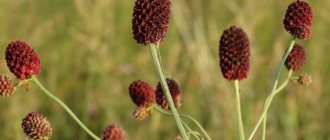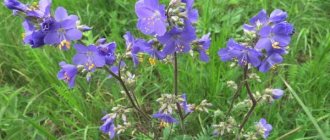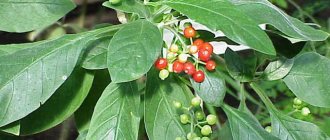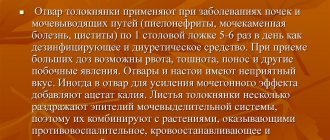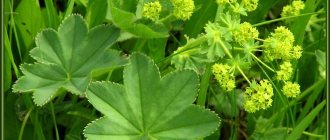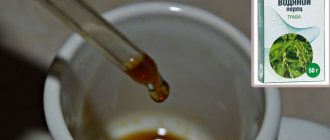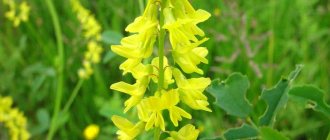Foxglove flowers are not only extremely beautiful, but also have medicinal properties. But treatment with digitalis must be careful, because in large doses it is a powerful poison.
A medicinal plant such as foxglove has found its use in a variety of areas. For its aesthetic appearance, the flower is used as a decorative element, and in medicine it is even a magical remedy . However, improper use of this plant can cause great harm.
Useful properties of foxglove
Foxglove purpurea is a plant from the Norichinaceae family.
Its unofficial names are: forest bell, forest bell, glove grass. Of medical interest is not the flashy flowers of foxglove, but its leaves. The plant is biennial and leaves for therapeutic purposes are collected only in the second year after planting. Foxglove flowers also appear in the second year of the plant's life, in summer. They can be purple, pink, white and yellow. Digitalis leaves contain cardiac glycosides - substances that tonic the activity of the heart muscle, helping to eliminate arrhythmia: digoxin, lanatosides E, C, A, B, D, digitoxin, gitoxin, acetyldigitoxin, digotonin, purpureaglycosides A, B.
Collection and storage of medicinal raw materials
Leaves are used as medicinal plant material. In the first year of foxglove's life, rosette leaves are used as an herbal plant, and they can be collected up to three times per season (summer time). Stem leaves are collected in the second year of the plant’s life immediately after flowering (this is important, since if the collection time is violated, the pharmacological properties of the raw material are reduced) without petioles, they interfere with drying and do not contain biologically active components. It is necessary to collect digitalis plants in dry, sunny times (due to the increased intensity of accumulation of glycosides in the light). As a rule, collection is carried out in the flowering phase. When collecting plant materials in the first year of life (if the plant is grown on a two-year plantation), it is important not to damage the root system.
The medicinal properties of digitalis may not be as effective if the plant material is not stored correctly. That is why it must be well packaged so that the biologically active components are preserved in the best possible way. Whole foxglove raw materials must be stored in a dark and dry room, and the biological activity of the leaves is monitored annually.
Application
Digoxin and lanatoside C have the greatest activity. Digitalis preparations, which include these glycosides, are used in medical practice to treat chronic and acute forms of circulatory failure, tachycardia, hypertension, coronary sclerosis, mitral valve disease, myocardial dystrophy, and acute heart failure.
At the same time, the following properties of digitalis are noted: it increases the power of cardiac output, lengthens diastole, reduces the threshold of excitability of the cardiac conduction system, and helps increase the level of calcium in the plasma. All this stabilizes blood circulation in the myocardium and blood flow in the vessels. Digitalis purpurea glycosides accumulate in tissues, and therefore their therapeutic effect is long-lasting. Another property of digitalis has been noted - the saponins and digitonin included in its composition increase the absorption of other glycosides taken by the patient.
The pharmaceutical industry produces the following digitalis preparations: tablets containing dry leaf concentrate, dried leaf powder, leaf infusion, Gitoxin, Digitoxin, Cordigit tablets, Digoxin and Celanide solutions and tablets.
Medicines based on digitalis purpurea Celanide and Digoxin act quickly, and therefore they can be used in acute cases. To stop an attack, glycosides are administered intravenously, and tablets are prescribed to treat chronic forms of heart disease. After intravenous administration, the cardiotonic properties of digitalis appear within 15-30 minutes, and when administered orally, within 1.5-2 hours after taking the tablets.
Treatment of paroxysmal atrial fibrillation: cardioversion
The goal of drug intervention is to restore and maintain normal heart rhythm. This approach is called heart rate control. Treatment of atrial fibrillation has three main goals:
- Control of heart rate against the background of arrhythmia (without restoring normal, sinus rhythm);
- Conducting antiarrhythmic therapy (relief and prevention of paroxysmal atrial fibrillation);
- Prevention of thromboembolic complications
In addition to medications, traditional medicine is used to treat it.
Infusions of medicinal herbs are used to prevent attacks and slow down the pulse in a constant form. In first place is hawthorn:
- Tincture. To prepare it, you need to mix equal amounts of infusions of hawthorn, valerian and motherwort. The resulting infusion is left in the refrigerator for 24 hours. You need to drink 1 small spoon three times a day, ½ hour before meals.
- Decoction. You need to chop 30 hawthorn berries, add a glass of boiling water, and boil for about 10 minutes. Ready-to-use product to drink throughout the day.
Viburnum is used for treatment. A glass of dried berries must be filled with the same amount of boiling water and placed on the stove. After boiling, close the lid and leave to infuse. Drink two-thirds of a glass three times a day.
Honey and lemon in combination will help not only with this disease, but also increase overall tone. You need to chop ½ kg of lemons, add honey to the mixture, mix well. Take the medicine 1 tablespoon in the morning and before bed.
A honey-nut mixture will help with atrial fibrillation. Add 100 grams of ground walnut kernels to half a kilogram of honey. Mix well and take half a tablespoon three times a day.
You can use a mixture of onions and apples in treatment. The onion needs to be peeled and finely chopped, the apple must be peeled, seeds and also chopped. Mix everything and eat a little for a month.
Rosehip is a wonderful medicinal plant. It is necessary to remove the seeds from the berries, then add a tablespoon of purified raw material to a container of water and leave to boil for 10 minutes. Add a spoonful of honey to the cooled and strained infusion. Drink the decoction 4 times a day, ½ cup, 30 minutes before meals.
There is a recipe for a vitamin mixture that has a beneficial effect on the cardiovascular system. For preparation, take the same amount of honey, dried apricots, lemons, walnuts and raisins. Solid ingredients are ground and mixed with honey. Eat 1 tablespoon in the morning on an empty stomach. You need to take the medicine for a month twice a year - in spring and autumn.
Mint leaves are poured into a glass of boiling water, left to infuse for about 60 minutes, filtered and drunk 30 minutes before breakfast. The infusion should be taken every day for a long time.
There are a lot of traditional medicine recipes, but remember that it cannot replace drug treatment.
Treatment tactics depend on the specific clinical situation, the frequency and duration of atrial fibrillation, as well as the presence of a threat of thromboembolic complications. The following groups of drugs are used to treat atrial fibrillation with tablets:
- Beta-adrenergic receptor blockers (propranolol, esmolol, metaprolol) - reduce the frequency of myocardial contractions with increased tone of the sympathetic system and overproduction of thyroid hormones.
- Calcium ion blockers - drugs prevent calcium from entering the cell. Tablets are prescribed for bronchial asthma and intolerance to beta blockers. Contraindicated in severe heart failure.
- Cardiac glycosides – digoxin. The drug is used for permanent arrhythmia to control the frequency of contractions. It has an inotropic effect (increases myocardial contraction), relieves blood circulation in the pulmonary system and has a diuretic effect. Tablets are taken according to strict indications and under pulse control, as they can accumulate in tissues and cause intoxication.
- Amiodarone group (cordarone, sotalol) - drugs are used both for infusions and in tablets for the prevention of arrhythmia attacks.
Contraindications for taking cordarone tablets:
- Thyrotoxicosis;
- Sensitivity to iodine-containing drugs;
- Intraventricular heart block;
- Lack of potassium ions in the body.
Sotalol has fewer contraindications, but its antiarrhythmic properties are lower. To relieve paroxysmal atrial fibrillation, cordarone is used by injection only in a hospital setting. The dose is calculated individually for each patient.
Irregular rhythm is a consequence of many etiological factors. If after 60, arrhythmia is associated with vascular damage by atherosclerosis, then in young and middle age hormonal changes come to the fore: intoxication with thyroid hormones, menopause.
Therefore, the treatment of atrial fibrillation in the elderly has its own characteristics. After 60 years, arrhythmia often becomes permanent. Treatment in this case comes down to monitoring the heart rate. Digoxin or cordarone is used for this purpose. The drugs are taken in an individual dose under pulse control.
Both digoxin and cordarone accumulate in the body and can cause symptoms of intoxication, which are manifested by nausea, vomiting, and changes in the cardiogram. Therefore, these medications should be taken under medical supervision, pulse monitoring and ECG monitoring. For heart failure, diuretics are added to therapy. Antihypertensive drugs are prescribed to correct blood pressure.
Before prescribing digoxin, an analysis of the level of potassium in the blood is done, since the drug removes this trace element from the body, causing the appearance of ventricular extrasystoles. Severe digitalis intoxication can develop into a dangerous rhythm disorder - ventricular fibrillation.
If beta blockers are used to treat atrial fibrillation in young people, digoxin is used in older people, as it reduces the frequency of contractions at rest and also has a diuretic effect. Provoking factors are often the following:
- Colds, ARVI; hypertonic disease;
- Cardiac ischemia, angina pectoris;
- Obesity;
- Physical and emotional stress;
- Hypokalemia.
The basic rules for treating atrial fibrillation in the elderly include constant use of medications under the supervision of a physician. A normal heart rate, even with arrhythmia, does not interfere with leading a normal, measured lifestyle.
If the arrhythmia cannot be stopped with pills and injections, electrical cardioversion comes to the rescue. It is performed in a hospital setting using a defibrillator: electrodes are placed on the apex and base of the heart and a shock is generated. At the prehospital stage, this method is used only for health reasons: in case of a critical drop in blood pressure.
Drug cardioversion is prescribed if the attack lasts no more than 48 hours. For this purpose, novocainamide, amiodarone, and flecainide are used.
Their effect depends on the duration of the attack, so the drugs of choice are:
- For paroxysms of less than four days, propafenone and flecainide are used;
- More than four days - ibutilide, amiodarone, quinidine are prescribed;
- For long-term disorders, amiodarone is used.
To eliminate paroxysmal atrial fibrillation, cordarone is a universal remedy. The drug in tablets, dronedarone, has fewer contraindications. It is not prescribed to patients with decompensated heart failure. It is also not contraindicated in persons with hypersensitivity to iodine preparations.
Contraindications to the use of digitalis
Foxglove is a poisonous plant with a number of serious side effects, so using its leaves on your own or at home is not recommended. You can grow foxglove flowers in garden plots only for decorative purposes.
Digitalis preparations can only be taken under the supervision of a cardiologist in a hospital - due to incorrect dosing of the drug, poisoning can occur.
Symptoms of digitalis poisoning: decreased heart rate, shortness of breath, decreased frequency of urination, nausea, irregular heart rhythm, diarrhea, headache, dizziness, blue lips, choking, severe body pain, trembling, hallucinations, convulsions, mental disorder. A lethal dose is considered to be 2.25 g of digitalis.
Treatment of poisoning begins with immediate cleansing of the intestines, stomach, and intake of activated carbon or other sorbent. You should definitely seek medical help. Typically, patients admitted with digitalis poisoning are prescribed caffeine, atropine, potassium chloride, and unithiol.
Digitalis is contraindicated in: acute infarction, complete atrioventricular block and other manifestations of severe bradyarrhythmia, active rheumatic heart disease, aortic valve stenosis, endocarditis, compensated heart defects.
Information about the drug is generalized, provided for informational purposes and does not replace official instructions. Self-medication is dangerous to health!
Notes
- For the convention of indicating the class of dicotyledons as a superior taxon for the group of plants described in this article, see the section “APG Systems” of the article “Dicotyledons”.
- Information about the genus Digitalis
Index Nominum Genericorum
database of the International Association for Plant Taxonomy (IAPT). - Annenkov, 1878, p. 126.
- About digitalis in the magazine “Provisor”
- ↑ 1 2 Digitalis
(English). The Plant List. Version 1.1. (2013). Retrieved October 8, 2021. - Foxglove at nic.funet.fi (Accessed 30 January 2010)
- Plantarium (Retrieved January 29, 2010)
- According to the GRIN
. See "Links" section - onego.ru (Accessed January 29, 2010)
- What are SAPONINS - Big Medical Encyclopedia (Russian). bigmeden.ru. Retrieved May 12, 2021.
- Big medical encyclopedia. — Directmedia, 2013-03-13. — 445 p. — ISBN 9785446042784.
- Natural toxic substances.
- Foxglove purpurea.
- ↑ 123
N. P. Arzhanov. Digitalis is a therapist’s “scalpel”: almost as effective in skilled hands, almost as dangerous in inept hands // Pharmacist, No. 13, 1999 - Prescription poison Archived January 6, 2010.
- Van Gogh's visual disorder: xanthopsia? glaucoma?
- Those who are prescribed digitalis drugs (inaccessible link - history
). Retrieved April 30, 2010. Archived September 25, 2011. - Scientists have solved a crime of the 14th century: the patron of Dante Alighieri was poisoned. Gazeta.ru, February 4, 2015.
- ↑ 1 2 Astakhova V. G.
Mysteries of poisonous plants. - M.: Timber Industry, 1977. - 176 p.
Peculiarities of prescribing digitalis preparations.
Digitalis preparations are prescribed according to the scheme after digitalization.
Digitalization (saturation) is carried out within a week, during this period the drugs are prescribed according to the scheme in doses necessary to saturate the transport proteins of the blood. Subsequently, they switch to maintenance doses that prevent cumulation.
Side effects.
From the cardiovascular system -
bradycardia to antiventricular block, extrasystoles are possible.
Chemical composition
Foxglove or Digitalis is a genus of herbaceous biennial or perennial plants belonging to the Plantain family.
For medicinal purposes, foxgloves woolly and purple (purple or red) are most often used.
The leaves of foxglove woolly contain cardenolides (cardiotonic glycosides), the main of which are lanatosides (digilanides) A, B, C. Enzymatic hydrolysis produces secondary glycosides: digitoxin, acetyldigitoxin, acetylgitoxin, acetyldigoxin, gitoxin, digoxin.
The aerial part of red foxglove contains steroidal glycosides (digitonin, digitoxin, gitonin, gitoxin), as well as a number of genoin glycosides (purpureaglycosides A and B), which are converted into primary (secondary) glycosides during drying and storage. The plant also contains choline, a number of organic acids, flavonoids (luteolin), saponins and other compounds. The leaves contain ash, macro- and microelements (potassium, calcium, magnesium, zinc, selenium, iron and others).
Characteristic
Name
The scientific name of the genus comes from Lat. digitus - “finger” or “thimble”, based on the shape of the corolla. The Russian name has the same origin.
Botanical description
Digitalis purpurea
.
Botanical illustration from Köhler's Medizinal-Pflanzen
, 1887
Perennial and biennial herbs, in the Western Mediterranean - subshrubs and shrubs.
The stem is mostly tall, straight or ascending, simple, sometimes branching in the upper part from 30 to 150 cm in height.
Leaves are alternate, entire, oblong-ovate or lanceolate, less often linear-lanceolate or linear, entire or serrated, acute, covered below with simple and glandular hairs. The basal leaves are petiolate, the stem leaves are mostly sessile, semi-stem-encompassing and stem-encompassing.
The flowers are collected in an apical one-sided or multi-sided raceme; bracts leaf-shaped, less often scale-like; pedicels are straight or sinuous (from 1 to 15 mm long), glandular-pubescent. The calyx is bell-shaped, five-parted almost to the base, remaining during fruiting, shorter than the corolla tube or equal to it, with the upper (posterior) lobes of the calyx somewhat shorter than the lower (anterior), ovoid or lanceolate, mostly covered with hairs or cilia, sometimes membranous along the edge.
The corolla is short- or long-bell-shaped, tubular or swollen, bilabial along the edge; the upper (rear) lip is mostly shorter than the lower, short-bilobed, the lower (front) lip is three-lobed, with the middle lobe longer than the two lateral ones. There are four stamens attached to the lower part of the corolla, two of them are opposite the lower lip, longer than the other two. The anthers are bilocular, their nests diverging, merging at the bases; pollen grains are round or triangular-rounded, 8-25 μ (from the pole), tricolate, exine granular or reticulate. Pistil with a long style and a short bilobed stigma; ovary superior, bilocular.
The fruit is an ovoid or oblong-ovate capsule, bilocular, cracking along the septum. Seeds, numerous, small, about 1 mm long, yellow or brown, cylindrical or tetrahedral-prismatic; on one side of them there is a more aphid less deep groove; the surface of the seeds is covered with rounded cells with thin-film walls.
Spreading
About 25[5] species are found in Europe, Western Asia and North Africa, mainly in the Mediterranean. In the former USSR there are 6 species, of which 4 are only in the Caucasus, and 2 are also in the European part and Western Siberia.
They grow mostly in deciduous and mixed forests, edges, clearings, bushes, and meadows.
Biological features
Foxglove flower in section.
Foxgloves are food plants for butterflies: checkerworts Euphydryas aurinia
,
Euphydryas aurinia beckeri
,
Euphydryas maturna
,
Mellicta aurelia
and cutworm
Polymixis flavicincta
[6].
Foxglove flowers provide refuge for insects on cold nights, since the temperature inside the flower at night is much higher than the temperature of the surrounding air. Leaving their shelters, insects carry pollen on themselves and leave it on other flowers, thereby contributing to the pollination of plants. Foxglove flowers are designed in such a way that bumblebees visiting them for honey inevitably smear their backs with pollen, coming into contact with two pairs of anthers hanging just under the roof of the upper lip.
Ecology
Foxglove ( Digitalis lanata)
) is included in the Red Book of Moldova,
Digitalis grandiflora
- in the Red Book of the Altai Territory, Kurgan, Kursk, Novosibirsk, Sverdlovsk, Smolensk, Tver, Tyumen regions, the Republic of Latvia, the Republic of Tatarstan, the Udmurt Republic.[7]
Kinds
According to GRIN there are 11 species in the genus:[8]
- Digitalis ferruginea - Foxglove - Southern and Eastern Transcaucasia, Mediterranean, Türkiye
- Digitalis grandiflora Mill. — Foxglove grandiflora [syn. Digitalis ambigua Murray] - European part of Russia, South-Western Siberia, Western Europe, Mediterranean
- Digitalis laevigata Waldst. & Kit.
- Digitalis lanata Ehrh. — Foxglove woolly — Hungary and Southern Europe, Moldova, Western Ukraine
- Digitalis ferruginea
- Digitalis grandiflora
- Digitalis laevigata
- Digitalis lanata
- Digitalis lutea - Yellow foxglove - southwest and central Europe[9]
- Digitalis mariana Boiss.
- Digitalis nervosa Steud. & Hochst. ex Benth. — Foxglove veined — Northern Iran, Armenia and Azerbaijan
- Digitalis obscura
- Digitalis lutea
- Digitalis mariana
- Digitalis obscura
- Digitalis parviflora Jacq.
- Digitalis purpurea typus - Foxglove - Western, Central and Southern Europe, Morocco Digitalis purpurea subsp. purpurea [syn. Digitalis nevadensis Kunze - Nevada foxglove] - Portugal
- Digitalis parviflora
- Digitalis purpurea
- Digitalis thapsi
In gardening
Some types of foxgloves are decorative. Digitalis grandiflora
) in cultivation since 1561, Foxglove (
Digitalis ferruginea
) - since 1597, and Foxglove (
Digitalis purpurea
) - since ancient times. In the USSR, Foxglove red was cultivated in the Krasnodar region, Western Siberia, Foxglove woolly - in the North Caucasus and Ukraine.
Beneficial features
Digitalis, isolated from digitalis, has long been the only and indispensable drug in the treatment of chronic heart failure. Thanks to the action of the active substances of the plant, the contraction of the heart muscle increases, which helps to accelerate blood circulation and remove unwanted accumulation of water in the body through increased urination. Moreover, in case of overdose, the plant is a dangerous poison.
When used externally, the plant promotes wound healing.
Side effects
In case of excessively prolonged use of digitalis purpurea preparations or an overdose, severe poisoning is possible due to the selective effect of cardiac glycosides on the heart.
The main symptoms of cardiac glycoside poisoning include:
- the appearance of polytopic extrasystole;
- bigeminy;
- a sharp slowdown in heart rate.
The use of the drug is immediately discontinued in order to exclude complete atrioventricular block in case of single loss of pulse or signs of bradycardia, as well as paired extrasystoles. In case of an overdose of digitalis preparations, in some cases the following are observed: nausea, vomiting and decreased diuresis.
For toxic phenomena, the following are indicated: caffeine, atropine, unithiol, potassium chloride.
Contraindications
- Coronary insufficiency (especially with sclerosis of the coronary vessels of the heart);
- Severe bradycardia;
- Complete atrioventricular block;
- Acute myocardial infarction;
- Rheumatic carditis (due to the risk of embolism);
- Active endocarditis;
- Hypersensitivity to the active substances of the plant.
Digitalis preparations are not prescribed for compensated heart defects.
Caution is required when using the plant for aortic defects (especially stenoses), which are accompanied by persistent bradycardia. If bradycardia develops from small doses of digitalis, belladonna can be prescribed at the same time.
Literature
- Botanical Dictionary. A reference book for botanists, rural owners, gardeners, foresters, pharmacists, doctors, road specialists, travelers around Russia and rural residents in general / Compiled by N. Annenkov. - St. Petersburg: Printing house of the Imperial Academy of Sciences, 1878. - P. 126.
- Thimble grass // Encyclopedic Dictionary of Brockhaus and Efron: in 86 volumes (82 volumes and 4 additional). - St. Petersburg, 1890-1907.
- Foxglove // Morshyn - Nikish. - M.: Soviet Encyclopedia, 1974. - (Great Soviet Encyclopedia: [in 30 volumes] / chief editor A. M. Prokhorov; 1969-1978, vol. 17).
- Ivanina L.I.
Genus 1345. Foxglove - Digitalis // Flora of the USSR: in 30 volumes / started at hand. and under chap. ed. V. L. Komarova. - M.; L.: Publishing House of the USSR Academy of Sciences, 1955. - T. 22 / ed. volumes B.K. Shishkin, E.G. Bobrov. — P. 514—526. — 861 p. — 3000 copies.
Medicinal properties of foxglove and other advantages of the plant
The medicinal properties of digitalis have been known to people for a long time, but have been officially used in medicine since the middle of the eighteenth century.
It has been noted that the most useful are the leaves of the plant, which contain biologically active substances. Knowledgeable healers use leaves of special varieties of foxglove that are no more than one year old, although the plant itself is perennial. Since the flower is unpretentious in care, it is very popular among summer residents. In addition, the plant has an aesthetically attractive appearance, so it is often used to decorate flower beds, flower beds and alpine slides. In the city you can find colorful foxgloves growing along the border.
Medicinal properties of foxglove, which are actively used by traditional healers
The many medicinal properties of digitalis are used to relieve problems with the cardiovascular system.
Due to their positive effects on the heart and blood vessels, the drugs help eliminate concomitant diseases. What can be cured with foxglove using essential trace elements:
- For heart failure, digitalis-based medications are regularly prescribed.
- The manifestations of flickering arrhythmia can be eliminated thanks to the properties of the plant.
- The plant can be used in the treatment of epilepsy.
- An ointment based on foxglove can help relieve pain due to skin inflammation.
- For diseases of an infectious nature, it is better to use digitalis-based products.
- It is the main option for eliminating tachycardia and hypertension.
- Eliminates problems with blood circulation, restoring heart rhythm.
The wide use of the plant is possible due to the presence of digoxin, lanatoside and other biologically active substances in the leaves.
When growing foxglove on the site, do not forget to plant other medicinal plants. It can be lemon balm, thyme, bergenia, and anise.
Anticoagulants
Treatment of atrial fibrillation, in addition to normalizing the rhythm and frequency of ventricular contractions, also includes the prevention of blood clots and thromboembolism.
Warfarin is most often used to treat a permanent form of atrial fibrillation or for frequent attacks. Its mechanism of action is based on its influence on the cascade of blood clot formation. As a result, not only does the risk of thrombosis decrease, but there is also the possibility of resorption or organization of existing thrombotic masses.
The main disadvantage of this drug is the rather high risk of bleeding (nasal, gastrointestinal, etc.). Therefore, during treatment with warfarin, the blood coagulation system should be carefully monitored. To do this, patients take a test at least once a month, in which the most important indicator is the INR. The optimal value to maintain is 2.5-3.5.
Pradaxa is a fairly new anticoagulant that is used in the treatment of atrial fibrillation. Due to its special properties, its use does not require monitoring of coagulation parameters, and the risk of bleeding is significantly lower than when taking warfarin.
Atrial fibrillation can be treated in different ways. The main goal of drug therapy is to normalize the heart rate, eliminate the symptoms of the disease and prevent blood clots. If therapy is ineffective, surgical treatment is resorted to.
Functional atrial failure in atrial fibrillation creates favorable conditions for the formation of blood clots in the atria and the threat of thromboembolic complications. Therefore, treatment of atrial fibrillation must necessarily include antithrombotic therapy. Cardiologists prefer warfarin as a drug that acts on all stages of the formation of thrombotic masses. With constant use, even formed blood clots dissolve.
Warfarin and other anticoagulants are used for persistent forms and frequent attacks. Contraindicated in the following conditions:
- Stomach bleeding;
- Hemorrhagic cerebral stroke;
- Blood diseases;
- Peptic ulcer;
- Postoperative period.
It is taken under the control of blood clotting, which is determined by the INR. Laboratory tests should be taken every month.
Regardless of treatment methods, the main goal is to achieve a normal heart rate and prevent heart failure and blood clots. In the case of the correct approach to the treatment and prevention of attacks, arrhythmia proceeds favorably and has little effect on the general condition of a person.
The principle of using digitalis in folk medicine
For pharmaceutical purposes, only foxglove leaves are exclusively used, but traditional medicine uses more of the plant's resources. From almost any above-ground part, products are prepared that have certain characteristics:
- Compresses from the plant to relieve skin inflammation.
- Tinctures for internal use.
- Rubbing for external use.
- Ointments and creams based on the plant.
- Decoctions for administration in the form of drops.
Instructions for using digitalis depend on the type and type of product. More often they use tinctures, which include the entire above-ground part of the plant. This remedy is used to treat heart problems. Squeeze the juice from the stem, which is used to rub into the chest for hardening or pain.
How to prepare medicine from a plant
Digitalis must be properly prepared in the form of a versatile tincture or decoction to benefit the patient:
- Regular tincture: pour 3 grams of dry plant with 1 glass of boiling water. Leave for 10-15 minutes. Strain the finished tincture and add 1 drop of mint oil. Take a tablespoon every 3 hours.
- Boil 25 grams of dry plant and 3 in 3 glasses of water over low heat. Continue this procedure until 1 cup of liquid has evaporated. It is worth straining the broth and adding 25 grams of tincture with aroma. Take 2 tablespoons 1 time per day.
- Alcohol tincture: pour 25 grams of dry raw material with 60 grams of alcohol. Leave for 1 week and take 10 drops daily.
Foxglove leaf powder can be used to prepare any type of remedy. It’s easy to prepare raw materials: just cut off the above-ground part of the plant; leave in the sun for several days; Grind the dry mass until a fine powder is obtained.
It is advisable to use plants that grow far from the road. You need to wash the plant first.
Pharmaceutical uses of digitalis
Foxglove preparations in pharmacy are made from two types of plants: grandiflora and purple.
The leaves are processed in such a way that crystals are obtained. The raw materials are used on a production scale for the manufacture of drops, tablets, capsules and ointments. Instructions for the use of digitalis preparations must be followed as precisely as possible during the treatment process. When purchasing a drug, you should carefully study the recommendations regarding dosage and methods of use.
In the pharmacy you can find the following preparations that contain digitalis extract:
- leaf powder;
- tablets with dry concentrate: Gitoxin, Digitoxin, Cordigit;
- solutions called Digoxin, Celanide;
- An infusion of foxglove leaves in Latin sounds like digitalis tincture.
In emergency situations, intravenous drugs are used that act within half an hour. For chronic diseases, tablets and drops are used. Taking drugs from this pharmaceutical group should be periodic.
Content
- 1 Characteristics 1.1 Name
- 1.2 Botanical description
- 1.3 Distribution
- 1.4 Biological features
- 1.5 Ecology
- 1.6 Types
- 1.7 In gardening
- 2.1 Chemical composition 2.1.1 Symptoms of poisoning
- 2.2.1 History of the poison
Contraindications to the use of digitalis preparations
The medicinal properties of digitalis have a fairly wide range regarding the elimination of heart and vascular diseases. The chemical composition contains many components that can negatively affect the patient’s health.
In addition to independently studying the contraindications to taking digitalis-containing drugs and products, you should consult a doctor for advice.
Many people call foxglove the “therapist’s scalpel.” Taking such drugs is not always possible, as there are certain contraindications:
- If the patient has suffered a myocardial infarction.
- Has sclerosis of the coronary arteries.
- When the heart rate decreases.
- If you have tuberculosis or chronic lung diseases.
- Pregnancy and lactation period.
- Age limit that applies to children under 12 years of age.
- Special types of infectious diseases.
If specific changes in heart rhythm are diagnosed, restrictions may be placed on the use of digitalis-based medications.
